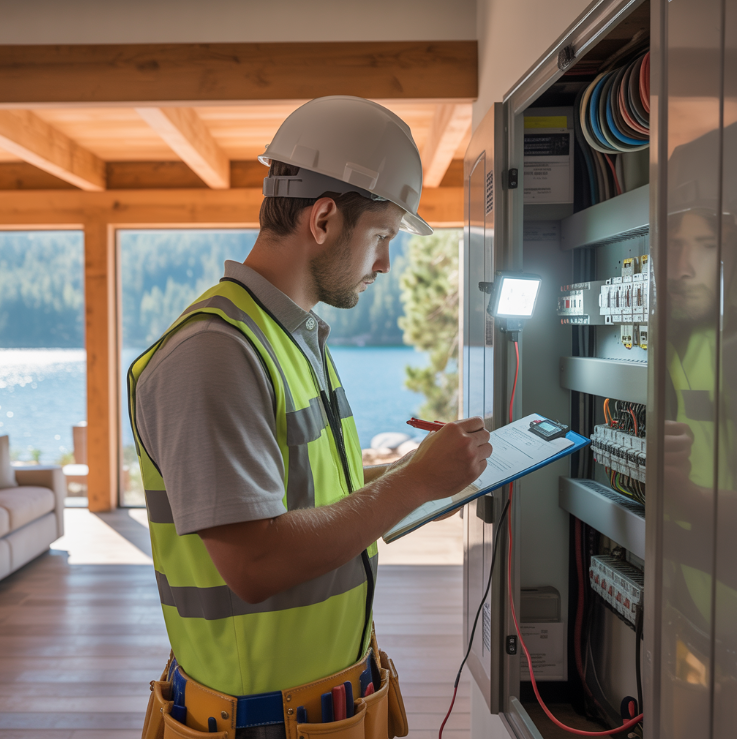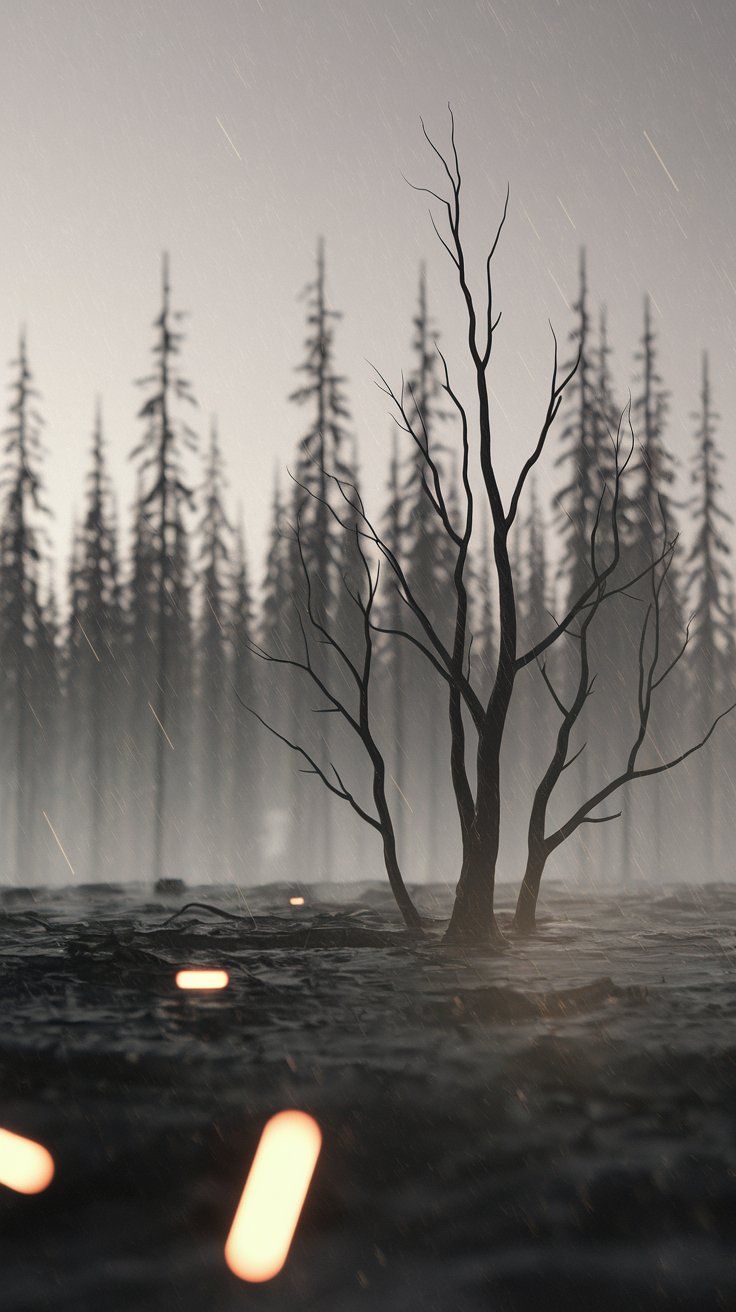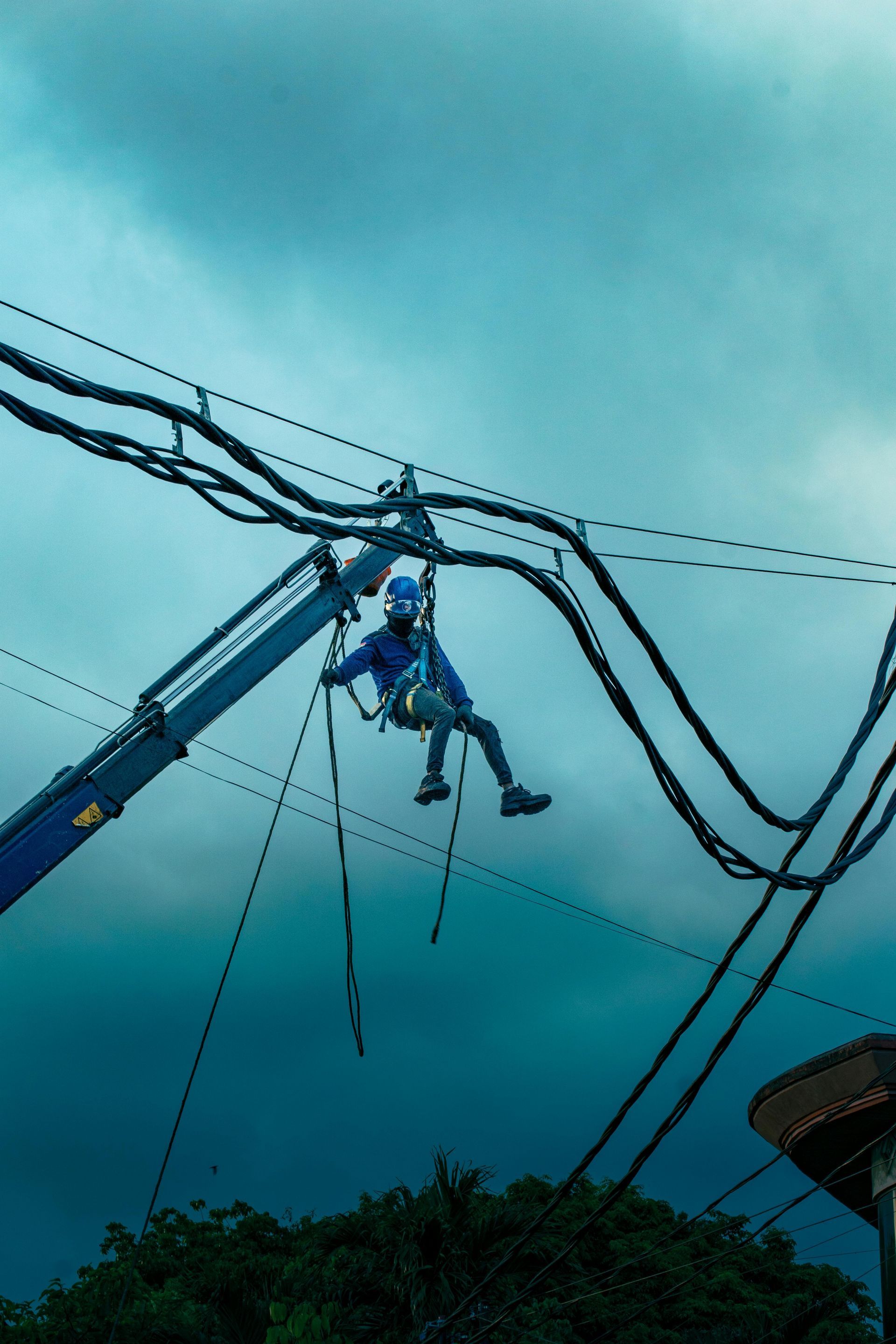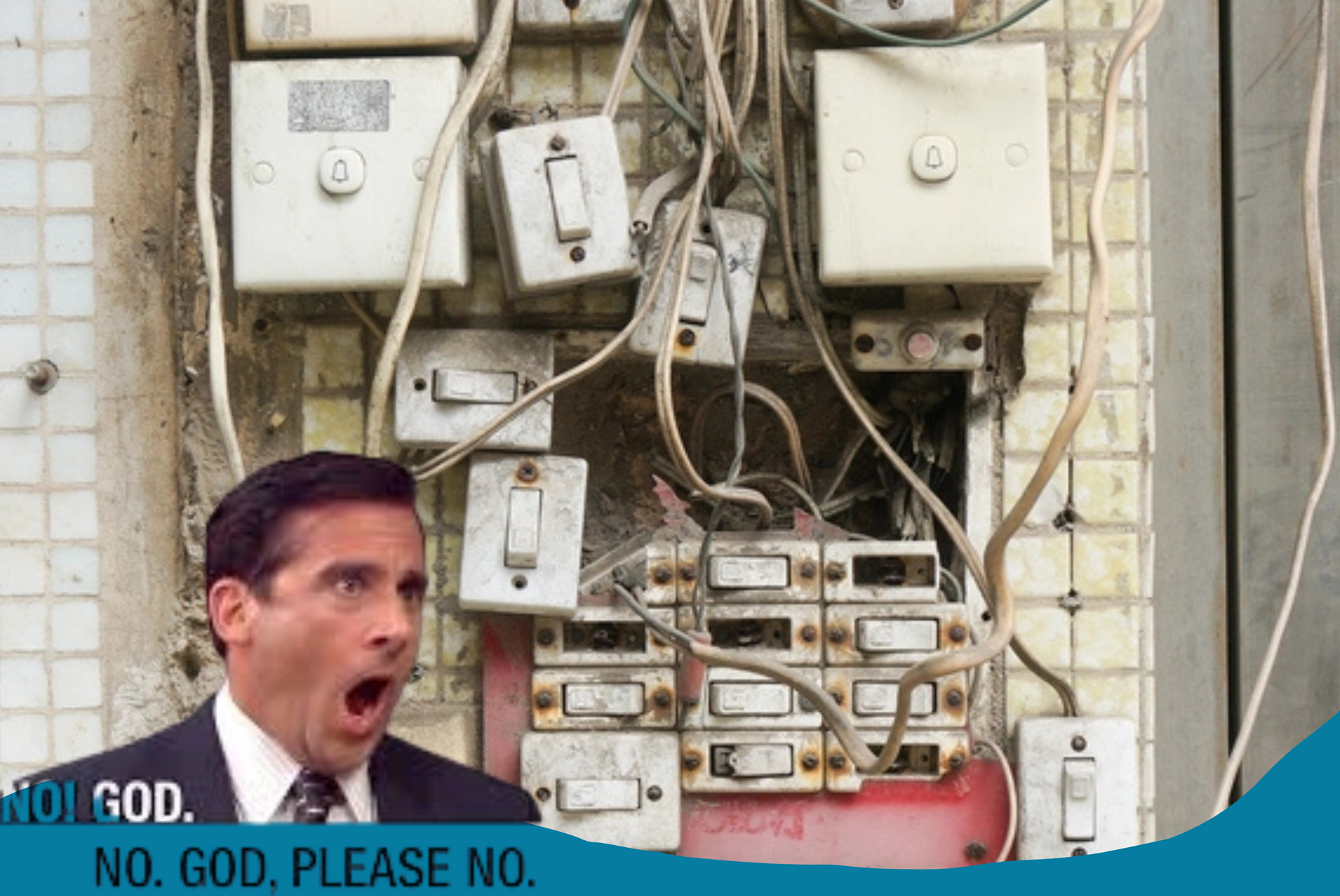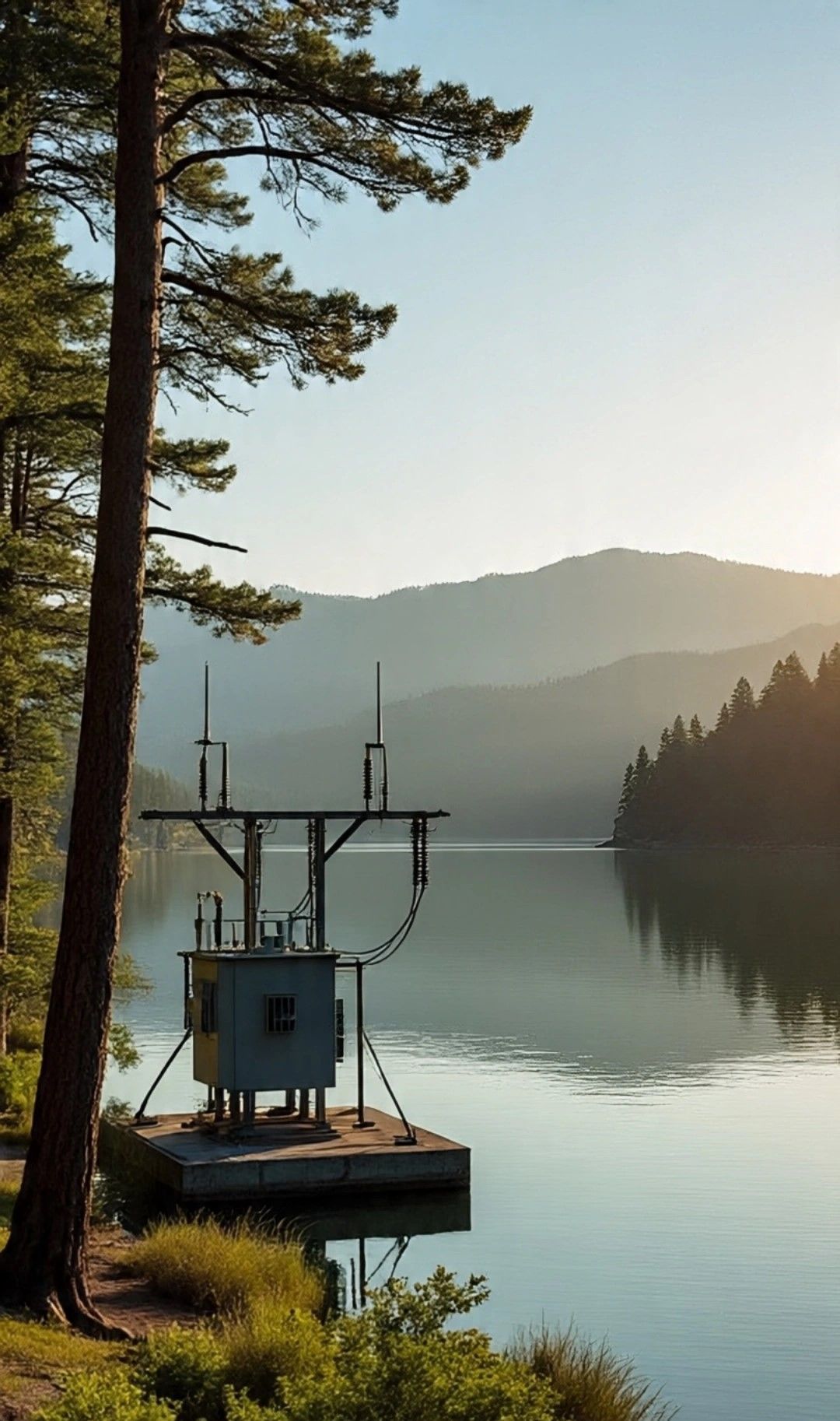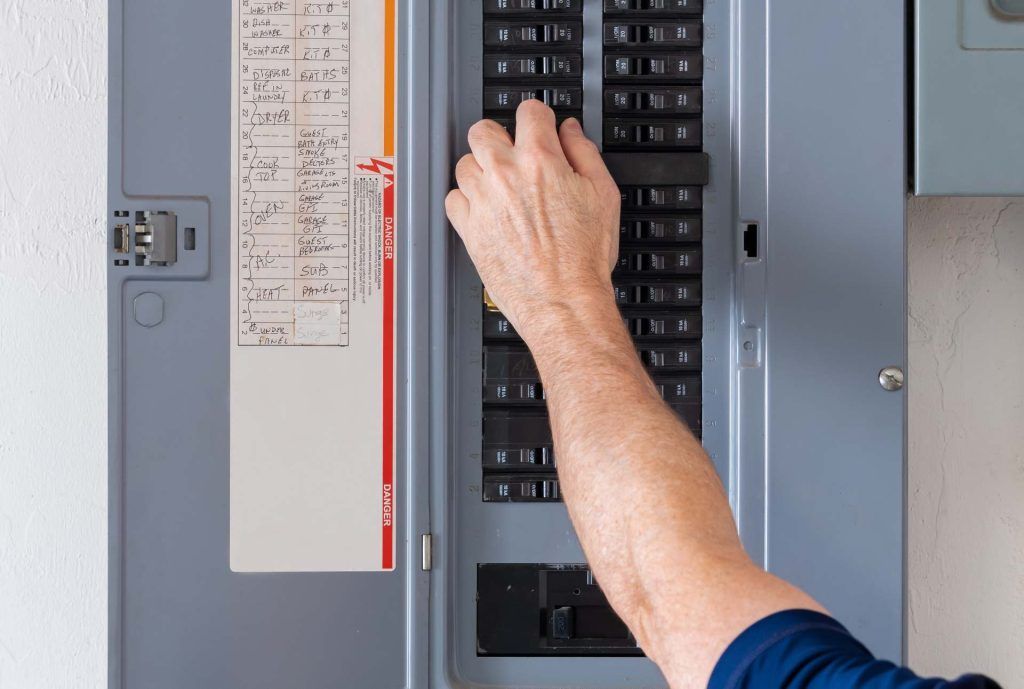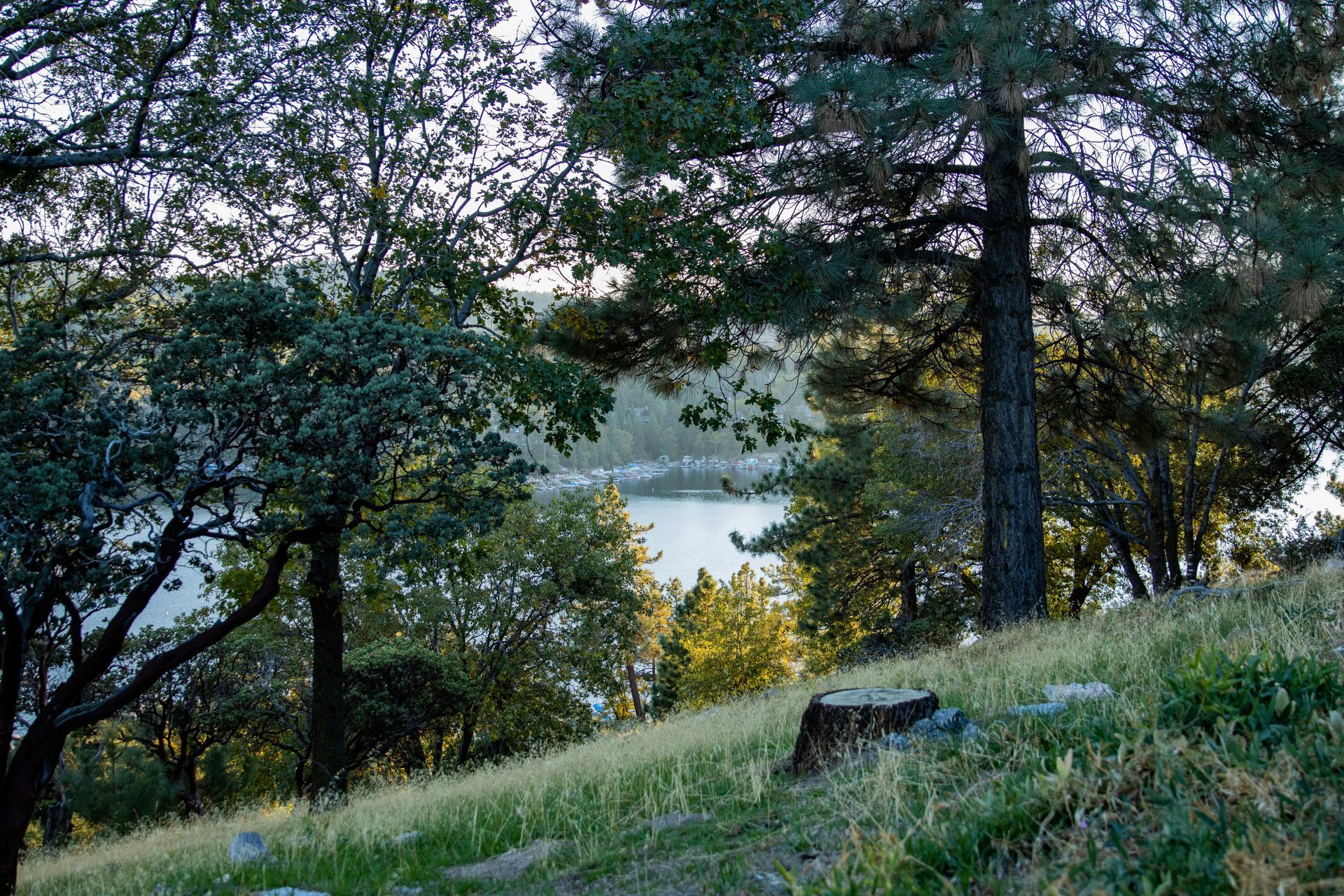If you're buying, selling, or renovating a home in Lake Arrowhead, Blue Jay, Crestline, or Running Springs, there's one critical detail that can derail your plans: smoke detector compliance. California has some of the strictest smoke alarm laws in the nation, and mountain homes built before 2014 almost certainly need updates to meet current code.
The good news? Understanding what's required doesn't have to be complicated. This guide breaks down exactly what Lake Arrowhead homeowners need to know about smoke detector regulations—and how to bring your property into compliance without the headaches.
Why California's Smoke Detector Laws Are Strict (And Why That Matters Here)
California's smoke detector requirements exist for good reason. The state has experienced devastating wildfires, and early detection saves lives. In mountain communities like Lake Arrowhead, where response times can be longer and homes are often surrounded by forest, working smoke alarms are even more critical.
Here's what makes Lake Arrowhead unique:
Wildfire Risk: Mountain homes face elevated fire danger, making early detection essential
Older Housing Stock: Many Lake Arrowhead cabins were built in the 1970s-1980s with outdated safety systems
Real Estate Transactions: Smoke detector compliance is required for home sales and often checked during escrow
Rental Properties: Short-term vacation rentals face additional inspection requirements
Bottom line: If your smoke detectors aren't up to code, it's not just a safety issue—it can delay a home sale, complicate refinancing, or result in violations during rental inspections.
Current California Smoke Detector Code Requirements (2024-2025)
California law requires specific types and placements of smoke alarms, and the rules have evolved significantly over the years. Here's what current code requires:
For Homes Built After January 1, 2014:
Hardwired smoke alarms with battery backup in every bedroom
Hardwired smoke alarms in hallways outside sleeping areas
Hardwired smoke alarms on every level of the home, including basements
All smoke alarms must be interconnected (when one sounds, they all sound)
Alarms must be photoelectric or dual-sensor (ionization/photoelectric combination)
For Homes Built Before January 1, 2014:
You have more flexibility, but you still need:
Working smoke alarms in every bedroom
Working smoke alarms in hallways outside sleeping areas
Working smoke alarms on every level
Alarms can be battery-powered or hardwired
If any hardwired alarms exist, they must have battery backup
Alarms must be replaced if they're more than 10 years old
Special Requirements for Real Estate Transactions:
When selling a home in California, you must provide written documentation that:
All required smoke alarms are present and operational
Alarms meet current manufacturing standards (check the manufacturing date on the back)
Water heater strapping and carbon monoxide detectors are also compliant
Many real estate agents require a licensed electrician to provide this documentation to satisfy buyers and lenders.
Common Smoke Detector Problems in Lake Arrowhead Homes
After years of working in mountain properties, we see the same compliance issues repeatedly:
1. Missing Bedroom Smoke Detectors
Older cabins often only have one or two smoke alarms, typically in hallways or living areas. Every bedroom must have its own detector—no exceptions.
2. Expired Smoke Alarms
Smoke detectors have a 10-year lifespan. The manufacturing date is printed on the back of the unit. If it's older than 10 years, it needs replacement—even if it "still works."
3. Battery-Only Systems in Hardwired Homes
If your home was built with hardwired smoke alarms, you can't simply replace them with battery units. Once a home has hardwired alarms, code requires maintaining that system.
4. Non-Interconnected Alarms
Newer code requires interconnected alarms so that when one detects smoke, all alarms throughout the house sound simultaneously. This is especially critical in larger multi-level mountain homes where someone sleeping upstairs might not hear an alarm in the basement.
5. Wrong Sensor Type
Ionization-only smoke alarms (older technology) aren't recommended anymore. Photoelectric or dual-sensor alarms detect smoldering fires faster, which is the most common type of residential fire.
6. Improper Placement
Smoke alarms should be installed:
On the ceiling or high on a wall (within 12 inches of the ceiling)
At least 10 feet from cooking appliances
At least 3 feet from HVAC vents
In the center of rooms when possible
Placement matters because smoke rises and spreads. Poor placement can delay detection by precious seconds or minutes.
Do You Need Hardwired or Battery-Powered Smoke Detectors?
This is the most common question Lake Arrowhead homeowners ask. The answer depends on when your home was built and what's currently installed:
Choose Hardwired Smoke Alarms If:
Your home was built after 2014
Your home currently has hardwired alarms
You're doing electrical work that requires permits
You want the most reliable, low-maintenance option
Battery-Powered Alarms May Work If:
Your home was built before 2014
You currently have all battery-powered alarms
You're not doing other electrical work
You use 10-year sealed lithium battery models
Our Recommendation: Even if battery alarms are technically allowed in your home, hardwired interconnected systems offer superior safety. When one alarm detects smoke anywhere in your home, every alarm sounds simultaneously. In a two-story cabin, this can provide critical extra seconds for escape.
Carbon Monoxide Detector Requirements (Don't Overlook These)
While we're discussing code compliance, California also requires carbon monoxide (CO) detectors in homes with:
Fuel-burning appliances (gas furnaces, water heaters, fireplaces)
Attached garages
Fireplaces or wood stoves
Lake Arrowhead homes almost always have one or more of these features. CO detector requirements include:
One detector within 15 feet of each sleeping area
Detectors can be hardwired, plug-in, or battery-powered
Combined smoke/CO detectors satisfy both requirements
Carbon monoxide is colorless, odorless, and deadly. In mountain homes with gas heating, fireplaces, and generators, CO detectors are non-negotiable.
How Much Does Smoke Detector Installation Cost in Lake Arrowhead?
Costs vary based on your home's size and current setup, but here are general ranges:
Battery-Powered Replacement:
DIY materials: $20-40 per detector
Professional installation: $75-150 per detector (includes labor)
Hardwired Installation:
Single detector add: $150-300 (includes running new wiring)
Full home upgrade (4-6 detectors): $800-1,500
Large homes (8+ detectors): $1,500-3,000
Interconnected Wireless System:
Equipment: $50-80 per detector
Installation: $100-200 per detector
For real estate transactions, many electricians offer flat-rate compliance packages that include inspection, documentation, and any necessary upgrades.
Pro tip: If you're already doing electrical work—like a panel upgrade or circuit additions—adding smoke detector updates is far more cost-effective since the electrician is already on site.
DIY vs. Hiring a Lake Arrowhead Electrician
Battery-powered smoke detector replacement is straightforward DIY work. You can handle it if you're comfortable on a ladder and following manufacturer instructions.
However, you should hire a licensed electrician if:
You need hardwired smoke detectors installed
Your home sale requires written compliance certification
You're unsure about proper placement or code requirements
You're updating multiple detectors throughout the home
Your home has an interconnected system that needs expansion
You want to add CO detectors or combination smoke/CO alarms
Licensed electricians understand California electrical code, San Bernardino County requirements, and proper installation techniques. They can also identify other electrical issues during the inspection that might affect your home sale or rental certification.
Real Estate Transactions: What Buyers and Sellers Need to Know
If you're buying or selling a Lake Arrowhead property, smoke detector compliance will come up during the transaction. Here's what to expect:
For Sellers:
Complete the "Smoke Detector Statement of Compliance" form
Verify all detectors are present, working, and meet code
Replace any expired alarms (check manufacturing dates)
Consider a pre-listing electrical safety inspection to avoid last-minute surprises
Provide documentation to satisfy buyer contingencies
For Buyers:
Home inspectors will check smoke detector compliance
Request the seller's compliance statement and verification
Consider asking for an electrician's certification if the home is older
Budget for potential upgrades if detectors are missing or expired
Check for carbon monoxide detectors as well
Many Lake Arrowhead real estate transactions stall because smoke detectors aren't addressed proactively. Smart sellers handle this before listing to avoid delays during escrow.
Smoke Detector Maintenance Tips for Mountain Homeowners
Installing code-compliant smoke detectors is step one. Maintaining them properly is equally important:
Monthly:
Press the test button on each detector
Listen for the alarm sound
Replace any non-functioning units immediately
Every 6 Months:
Replace batteries in battery-powered units (or use 10-year sealed battery models)
Vacuum dust and cobwebs from detector vents
Test interconnected systems to ensure all alarms sound together
Annually:
Test backup batteries in hardwired units
Check manufacturing dates and plan for 10-year replacements
Inspect mounting brackets for stability
Every 10 Years:
Replace all smoke detectors, regardless of whether they still work
Sensor degradation occurs over time, reducing effectiveness
Mountain-Specific Tip:
Lake Arrowhead's dust, pollen, and wood smoke can accumulate in smoke detectors faster than in valley homes. Regular cleaning prevents false alarms and maintains sensitivity.
What Happens During a Smoke Detector Compliance Inspection?
If you hire a Lake Arrowhead electrician for a compliance inspection, here's what they'll check:
Location Verification: Confirm detectors in every bedroom, hallway, and level
Manufacturing Date Check: Ensure no alarms exceed 10 years old
Functionality Testing: Test each alarm and verify audible alerts
Interconnection Testing: Verify all hardwired alarms trigger simultaneously
Proper Installation: Check mounting height, distance from vents, and secure attachment
Carbon Monoxide Detectors: Verify CO detector presence and placement
Documentation: Provide written certification for real estate or rental purposes
Comprehensive inspections typically take 30-60 minutes depending on home size and may identify other electrical safety concerns worth addressing.
Protect Your Family and Your Investment
Smoke detector compliance isn't just about checking boxes for a home sale or rental inspection. It's about protecting the people you love and the mountain property you've worked hard to own.
Lake Arrowhead's unique environment—surrounded by forest, with longer emergency response times—makes working smoke alarms absolutely essential. Whether you're updating an older cabin to meet current code, preparing your home for sale, or just want peace of mind, proper smoke detection is one of the smartest investments you can make.
Ready to Bring Your Lake Arrowhead Home Into Compliance?
Lake Arrowhead Electrical provides expert smoke detector installation, inspection, and certification services throughout the San Bernardino Mountains. We understand California code requirements and can handle everything from simple battery replacements to complete hardwired system installations.
Our smoke detector services include:
Code compliance inspections and documentation
Hardwired smoke alarm installation and upgrades
Interconnected system design and installation
Carbon monoxide detector installation
Real estate transaction certifications
Battery replacement and maintenance
Call (909) 403-4740 today
to schedule your smoke detector compliance inspection. Serving Lake Arrowhead, Blue Jay, Crestline, Running Springs, and all San Bernardino Mountain communities.

